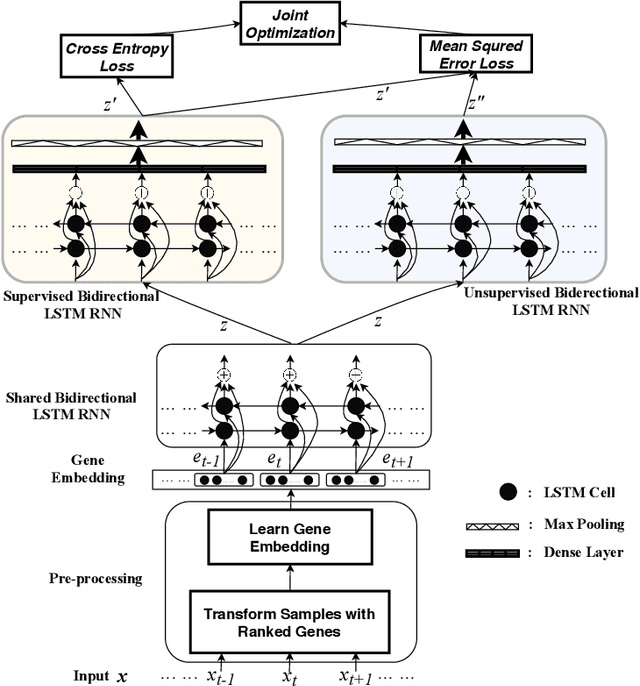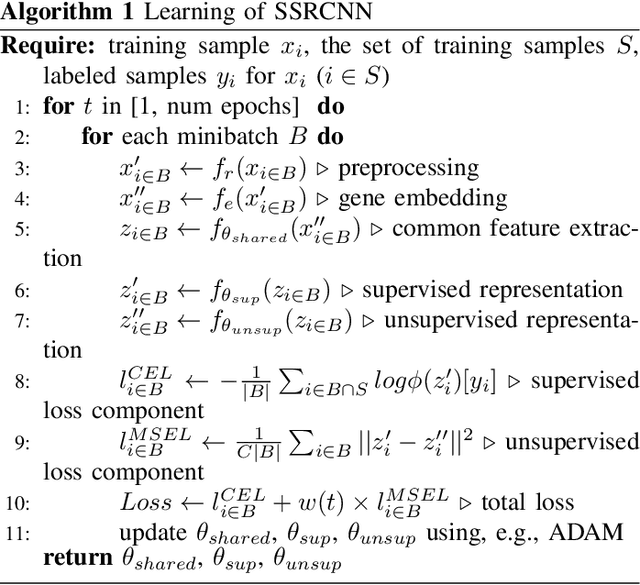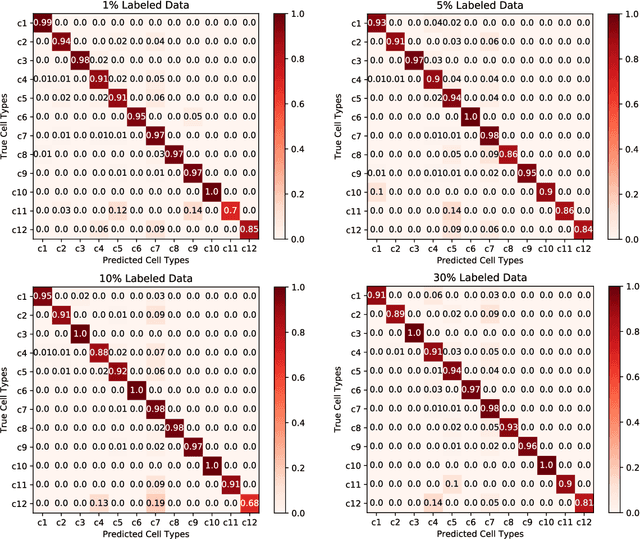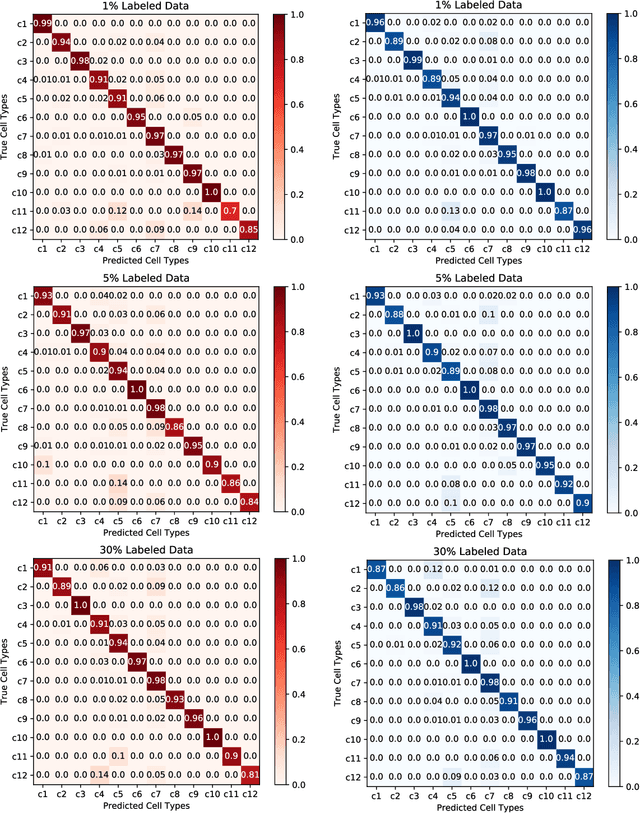Uboho Victor
Cell Type Identification from Single-Cell Transcriptomic Data via Semi-supervised Learning
May 06, 2020



Abstract:Cell type identification from single-cell transcriptomic data is a common goal of single-cell RNA sequencing (scRNAseq) data analysis. Neural networks have been employed to identify cell types from scRNAseq data with high performance. However, it requires a large mount of individual cells with accurate and unbiased annotated types to build the identification models. Unfortunately, labeling the scRNAseq data is cumbersome and time-consuming as it involves manual inspection of marker genes. To overcome this challenge, we propose a semi-supervised learning model to use unlabeled scRNAseq cells and limited amount of labeled scRNAseq cells to implement cell identification. Firstly, we transform the scRNAseq cells to "gene sentences", which is inspired by similarities between natural language system and gene system. Then genes in these sentences are represented as gene embeddings to reduce data sparsity. With these embeddings, we implement a semi-supervised learning model based on recurrent convolutional neural networks (RCNN), which includes a shared network, a supervised network and an unsupervised network. The proposed model is evaluated on macosko2015, a large scale single-cell transcriptomic dataset with ground truth of individual cell types. It is observed that the proposed model is able to achieve encouraging performance by learning on very limited amount of labeled scRNAseq cells together with a large number of unlabeled scRNAseq cells.
Two-path Deep Semi-supervised Learning for Timely Fake News Detection
Jan 31, 2020



Abstract:News in social media such as Twitter has been generated in high volume and speed. However, very few of them are labeled (as fake or true news) by professionals in near real time. In order to achieve timely detection of fake news in social media, a novel framework of two-path deep semi-supervised learning is proposed where one path is for supervised learning and the other is for unsupervised learning. The supervised learning path learns on the limited amount of labeled data while the unsupervised learning path is able to learn on a huge amount of unlabeled data. Furthermore, these two paths implemented with convolutional neural networks (CNN) are jointly optimized to complete semi-supervised learning. In addition, we build a shared CNN to extract the low level features on both labeled data and unlabeled data to feed them into these two paths. To verify this framework, we implement a Word CNN based semi-supervised learning model and test it on two datasets, namely, LIAR and PHEME. Experimental results demonstrate that the model built on the proposed framework can recognize fake news effectively with very few labeled data.
Deep Two-path Semi-supervised Learning for Fake News Detection
Jun 10, 2019



Abstract:News in social media such as Twitter has been generated in high volume and speed. However, very few of them can be labeled (as fake or true news) in a short time. In order to achieve timely detection of fake news in social media, a novel deep two-path semi-supervised learning model is proposed, where one path is for supervised learning and the other is for unsupervised learning. These two paths implemented with convolutional neural networks are jointly optimized to enhance detection performance. In addition, we build a shared convolutional neural networks between these two paths to share the low level features. Experimental results using Twitter datasets show that the proposed model can recognize fake news effectively with very few labeled data.
 Add to Chrome
Add to Chrome Add to Firefox
Add to Firefox Add to Edge
Add to Edge